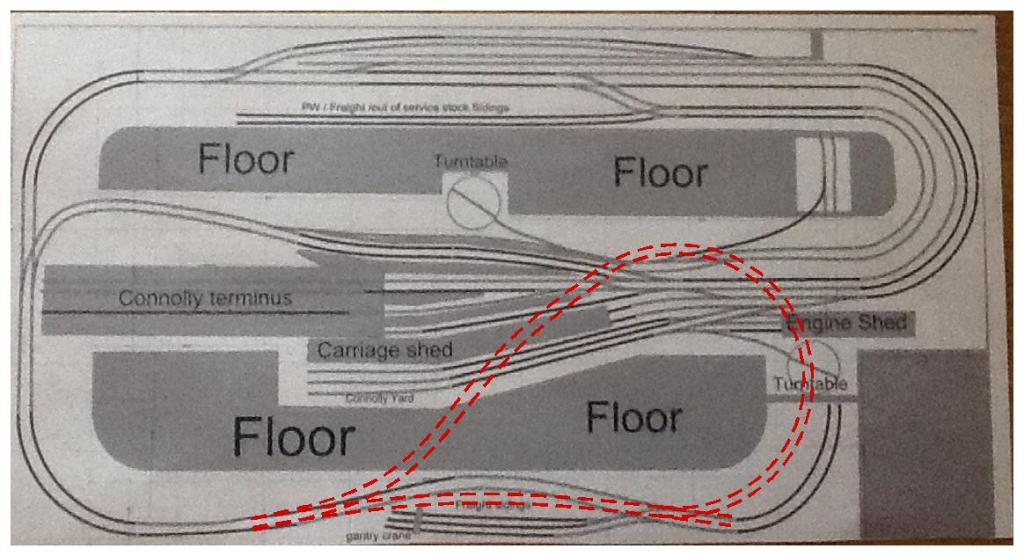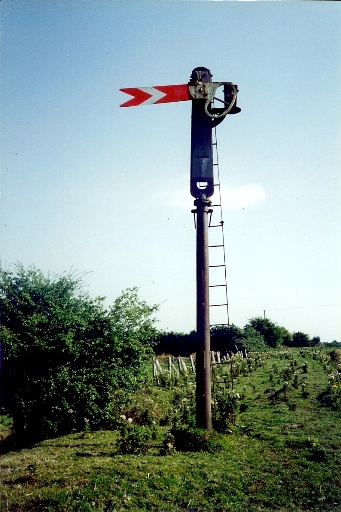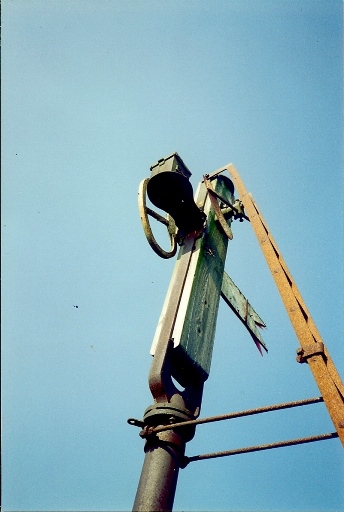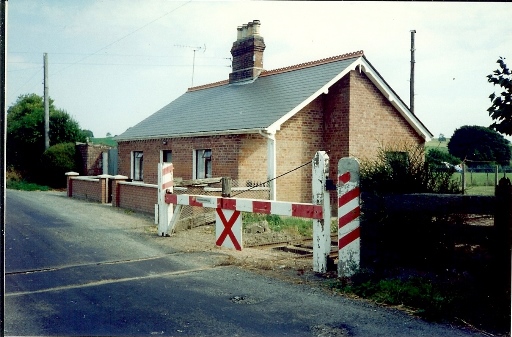-
Posts
4,734 -
Joined
-
Last visited
-
Days Won
118
Content Type
Profiles
Forums
Resource Library
Events
Gallery
Blogs
Store
Community Map
Posts posted by Mayner
-
-
Actually, what if Irish rail was privatised, into 2-3 different companies,maybe in 2011?
You would probably end up with Transdev (Veolia) operating the DART, & Cork Commuter Services with Stagecoach and First Group carving up Intercity, Bus-Eireann and Dublin Bus between them rather than any actual competition on a paricular route
I can't see any advantages in contracting out services to a Multi-National operator as the Irish Government would still be responsible for providing and maintaining the trains, busses, rail and road infrastructure and making up the operating losses, the operator basically paying staff a minimum wage and clipping the ticket.
-
So.. Re privatise?
Most probably a break up of CIE in a similar manner to the UTA into separate state owned railway, bus companies and road freight companies.
Abandonment of secondary main lines would have allowed Government to focus investment to improve service quality on the remaining lines, perhaps introducing Blue Pullmans or IC125s on the Cork & Belfast lines in the Mid-1970s
-
A couple of what if's I have been pondering over.
If the 1958 Transport act had put a requirement for CIE to keep the permanent way intact for a minimum of 5 or 10 years before it could dispose, lift and abandon a closed line would it have changed anything?
Some thoughts for a Easter Tuesday afternoon….
Forcing CIE to retain rather disused lines would have been more likely to weaken rather than strengthen the overall position of the railways. Possibly leading an acceleration of line closures and reduction in investment in 63 & 64 as the Board struggled with its legal duty to achieve break even by December 1964.
This might have had a positive side for the Irish Economy in forcing the Government to look seriously at breaking up CIE and liberalising surface transport.
The option of giving County Councils first refusal on closed lines never gained a foothold in Ireland, Farrafore-Killorglin or Listowel-Tralee owned by Kerry Council and operated by an independent operator would have been difficult if not impossible to establish with CIEs near monopoly position.
-
I may need to hire Kevin as a press and publicity agent

I hope to do an update in the next two weeks, Thump was kind of right the final version of the fret arrived last week, I just need to prepare a master for the cuplocks
At this stage the plan is to release the wagon in late 2016.
-
John, sorry to go back to the previous post but did you do up the scale plan of the interiors or does it come from Comet?
The plan's are my own drawn to scale for 4mm, I usually use a drawing as a template when I am making a part rather than scribing or marking out the part.
I dropped a clanger cutting out the seats for a scale width Irish coach rather than to fit the Dapol body shell.
Ok, it's close but not quite April 1st:confused:
So this is to stop it falling into the sea?
-
One of the challenges with a garden railway is keeping up with maintenance & renewal work just like a full size railway
The Easter Weekend seemed to be a good time for some maintenance work, but first job was to clear the line after last weeks high winds and rain.
The T&D Inspection Car was the only thing running, one of the locos took a nose dive off a raised section of line loosing its funnel when it de-railed on a twig. The loco seems to have rolled over upon impact with the funnel buried in a bed of mulch and the loco upright.
This area is due to be re-sleepered during the next 6 months, the sleepers on the Accucraft track are bleached out and turning to dust. Luckily I have found an alternative source of sleeper/tie strip from Sunset Valley in the USA expensive but should be good for at least 10 years.
The worksite is the main line and siding tracks at the principal station/yard Jackson City. The ties were replaced in this area during the last 6 months, but ballast still needed to be completed on the siding tracks and tidied up on the main.
In the past I had used loose ballast without an adhesive, which needed to be topped up either washed away by heavy rain or blown away when you use a blower to blow away twigs, leaves and other debris from the track.
Ballast in this area is a combination of re-cycled and new fine pebbles screened through 8mm wire mesh to remove larger stones, bonded with dilute concrete bonding agent and a drop of sugar soap to break down surface tension. A certain amount of fines was used in the mix in this area to create the well trodden area of a yard.
Gluing down is similar to the pva & eye dropper technique in 4mm & N, though washing away the ballast is less of a problem.
-
Nice to see a build of a Clogher Valley loco, I had a read though E M Paterson's book over the weekend very interesting and smartly turned out little railway right to the end, with the Atkinson-Walker railcar, "The Unit", re-built Castlederg engine with the remaining Sharpie engines in a mixture of red and green.
I am thinking of building a CVR 0-4-2T mainly to find use for a Bemo -0-4-0 diesel chassis. One of oddities was that while the CVR coaches were Branchlines best selling kits in 4mm, the Backwoods Miniatures CVR loco literally failed to sell.
-
Nice to see a heating van modelled a boiler and generator set
-
Correct, minister.
As a parallel but separate issue is the fact that it does seem fairly clear that official standards are lacking - or else the public's perception is. Both have one common denominator - the education system. Either teach it correctly and effectively, or give it up....
Government attempts to introduce a Standard or Official form of language are usually doomed to failure, particularly on a people who have a history of rebelling against authority.
The cumpulsary Irish became a tool for getting a job and few people could hold a conversation with a native speaker despite 10-12 years schooling
Contrast this with North and Mid-Wales where the Welsh language is used for every day social and business life, though relatively few people understand its written form
Te Puke - Irish
-
I am surprised that no one commented that there is no direct provision for reversing or turning a North or West bound train to return to the terminus.
A second return loop in the Sherriff St-Seville place area would overcome this problem and allow trains to work out and back to Connolly without the need to shunt or handle the trains.
I would probably be best to forget about freight and concentrate on the passenger side of the operation which is very busy by Irish standards. There may be room to include some hidden staging for passenger trains around the reverse loop
-
Er....have ye not contradicted yourself there? CDR in dire straits, yet more profitable than the GSR?
*scratches head, puzzled*
Poor proof reading I had meant the County Down not the Donegal
1939 operating ratios CDJR 81.85%, GSR 92.41, GNR 98.80, BCDR 103.43, NCC105.98, SLNCR 108.85,LLSR 121.90, CVR 264.64.
80% or lower is considered to be desirable for a railway
In the late 19th Century 5% was considered a good return on investment for a railway. Of the big companies the GSWR, GNR(I), BNCR (NCC) & MGWR were considered to be reasonably profitable by Irish standards returning 3-4% while the DSER struggled to return 1%.
-
They absolutely weren't, Minister! While the GSR was still solvent and a private company, it was clear that things weren't getting any better for them financially, and the government gave them little option. Obviously, they also took over the Dublin United Tramways Co., though this WAS solvent.
Sometimes governments can put pressure on private companies without actually taking them over. However, the GSR directors apparently were being convinced that by taking on these two other entities, all might be good....
The GSR never seems to have been given the credit that was due for some very astute financial management with MGWR financial and traffic people at the helm. Despite the drab image and age of the rolling stock the GSR was actually more profitable than its more enterprising cousins the GNR & NCC. The main problem was that none of the Irish companies were profitable enough to pay a dividend on the ordinary shares to be a worthwhile investment for institutional and mum and dad investors.
The GSR had the advantage over its Northern neighbours of a better route structure with longer and more direct routes between the main centres and since 1934 a near monopoly of rail and road transport in the Free State.
Given its way the GSR was likely to have been as ruthless in closing un-profitable lines, with over 900 miles of line up for closure in 1939. The make do and mend small loco policy of the 30s may have been influenced by the view that there was little point in replacing locos and stock on lines that the GSR planned to close.
The take over of the Grand Canal fitted in with the idea of eliminating a competitor, the canal competed with the GSR for freight traffic between Dublin-Tullamore-Athlone-Limerick & Dublin-thy-Carlow-Waterford with Irish Cement, Guinness and milling companies major shippers, the canal company had a fleet of trucks for local deliveries. In his book Green & Silver LTC Rolt compared the Grand Canal warehouses to busy railway goods sheds.
The only railway that was more profitable than the GSR was the narrow gauge County Donegal. Despite it modern trains the NCC was loosing money and the County Donegal, SLNCR & Clogher Valley in dire straits.
The nationalisation of the UKs railway and road service in the late 40s was driven more by socialist ideology than actual need the GWR lobbied to stay out, the formation of the UTA may have been tied in with this policy
Had the Union continued with the Irish parties holding the balance of power its possible the Tories or Liberals would have remained in power and the railways remained in private hands possibly evolving into transport & logistics companies with publically funded passenger services like the post privatisation UK rail services.
-
Well, if Ireland had remained a single jurisdiction, no border would have meant one owner nationally, whether under Irish or British rule. So no NCC, no GNR, no CDRJC, no BCDR, no GSWR, no CBSCR, no MGWR etc...
Either an all Ireland UTA (in which case they probably have closed everything but Dublin - Cork) or an all Ireland CIE, meaning in either case standard designs across the island. The entire railway history would have been completely different.
141s into Derry, MPD cars in West Cork..... anything.
Possibly continuing direct rule with the Irish Parties holding the balance of power between the Tories or Dominion status with Ireland entering WW11 on the Allied side
An amalgamation into 3 large companies in the 1920s followed by Nationalisation in the 1950s under an Irish Transport Executive.
The GSWR would have taken over the West Cork and possibly the SLNCR as a logical extension of the Limerick-Sligo line with running powers to Belfast and Derry.
An amalgamation of the DSER, Midland & GNR into an Irish Midland and Eastern balance the GSWR and compete with the GSWR for traffic to Rosslare, Waterford, Limerick and Sligo
The NCC would remain under LMS owner ship possibly taking over the BCDR. CDJR remain as it is possibly take over the Swilly.
Hard to guess how the loco and stock situation would have played out Inchacore would probably have continued on its merry way, while both the Midland & GNR had relatively modern fleets by Irish standards with little need to develop new types until the Mid 1930s. York Road would have Midlandised the BCDR loco fleet and could have imported bogie coaches from the LMS.
Hard to know what could have developed after Nationalisaton would an Irish Transport Executive developed its own traction, copied BTC designs or would Harland & Woolf have become a preferred supplier of locos and rolling stock.
-
So far this years efforts are mainly devoted to finishing off existing projects. Finishing off a rake of CIE Bredins seemed to be a good place to start, each coach has to be fitted with interior, roof detail, before painting, glazing and fitting replacement wheels and couplings
Interiors seemed to be a good place to start, using Comet Interior "kits" basically strips of seating, plasticard & glazing for floors and partitions.
A mitre box with a stop is a useful tool for cutting out seating 32 pair for a standard 64 seater coach.
64 Seater Coach interior before
After
The plasticard floor appears to be the correct width for the Dapol shell so its basically a matter of cutting to length, I use a NWSL Duplicutter for cutting the floor, partitions and doors to the correct length/width.
Brake Standard Interior
64 seater Standard with roof vents
Close up torpedo roof vents (Comet)
-
Hi Mike
The night goods had the heavy Class SG3s on them. I must try and count the number of wagons they took over the Wellington Bank on the mainline - that was more or less continuous 1 in 100 for close on ten miles!!!
Regards
Leslie
The Big Ds or SG3 were powerful locomotives, there was quite a bit written about how the NCC Moguls and Jeeps just did not have the sustained slow speed hauling power of the 0-6-0s when used on the Derry Road or Wellington Bank in the 60s.
McArnold's Golden Years of the Great Northern has some hair raising tales of trains splitting and run-aways between Pomeroy and Omagh. When a coupling broke the golden rule was to put on steam and run as fact as possible to avoid a pile up when the run away section caught up with the loco and front section of the train.
-
There should be no issues with wagon availability for the forseeable future, plenty of em to go around!
DFDS has increased from 1 to 2 trains, using 1 set of 12 CPWs, this set of wagons is now used on 4 days a week,
Waterford-Ballina Monday
Ballina- Waterford Tuesday
Waterford- Ballina Thursday
Ballina- Waterford Friday
I am told the reason for the change is DFDS winning business with a large pharma company based in the west of Ireland at the expense of other short sea shipping lines that were carrying the business by road to Dublin. This is additional on top of the tanks and containers to and from Coke.
Back to wagons,
IWT uses 3 sets (18 flat wagons), with 2 sets being used daily and the 3rd set being used for the extra trains on a Tuesday and Wednesday. All 3 sets are formed of 16 LX(45FT) and 2 LP(42FT) wagons. So in theory the 3rd set could be used for extra trains the other 4 days of the week if required.
The press release had me wondering if IE was going to run an extra or a longer train.
Nearly 20 years since the demise of Bell its great to see Waterford Port and DFDS becoming more pro-active about using rail and the direct sea route to the Continent. Its hard to see how land-bridging by road or rail across the UK was more economic or reliable than direct sailings to Rotterdam.
To put current traffic levels into perspective for over 20 years Waterford Port & Bell competed with Dublin, Belfast & Cork ports for traffic to the UK & the Continent regularly operated 3 daily liners from Dublin, 1 each from Cork & Limerick, plus 3-4 extras on weekends. Heuston and later the Holyhead container terminal acted as a hub with CIE Liner trains connecting with the Bell Liners.
-
Semi finished parts.
Roll around piece of wood or metal of suitable diameter or a set of rolls. Paper is to prevent the rolls flattening the rivets!
The semi-finished article, the reverse curves at the bottom were formed by flattening out the ends of the sheet and bending around a needle file handle, brass is easier than plasticard to work with will hold its shape and can be re-worked.
-
Little bit of metal bashing.
Drawing glued to metal sheet with PVA, punch out rivets with GW rivet press or a centre punch.
Rivet pattern punched out on rear of sheet.
Traditionally the design was transferred to the metal by marking out and scribing, but its more accurate to glue the working drawing to the sheet of metal or plasticard. Shape roughly cut out with a tin snips to within 5 mm of line.
Final cuts close to the cut line with a fine tin snips and tidy up with round and rectangular needle file
-
Since the ones I examined the home was worked by the gate , how was the distant worked perhaps it was just worked in tandem with the home.
Historically a high proportion of crossings outside of station limits appear to have been protected only by distant signals, with a home signal provided if sighting of the gates was poor. The signals at some crossings were controlled by ground frames Hodson's Bay Crossing outside Athlone had up & down home and distant signals controlled by a frame, Adare had a frame with 3 working levers controlling the gate lock and distant signals.
Its likely that CIE/IE had started to improve signalling at level crossings on an ad-hoc basis in response to near-miss incidents and complaints raised by drivers, resulting in quite different signalling at similar crossings on a section of line.
-
The majority of attended CX crossings had working distant signals, often with the gate functioning as home or stop signal.
http://www.raiu.ie/download/pdf/accident_kiltoom.pdf is a report into an incident with a level crossing protected by worked distant signals with insufficient stopping distance.
The majority of distant signals on the Kingscourt branch were fixed at caution as the majority of crossings were operated by the train crew. Signals included some interesting 19th Century specimens that may have dated from N&K days.
Distant signal near Castletown
Kilmainhamwood crossing
-
Chester MRC Dingle layout. I also have a small C&L layout.
I am not sure if the business is still in operation, the last time I was in contact with the owner Pete McParin he commented that the information on the web site was out of date and no longer prepared to supply the Irish kits.
The kits were relatively straightforward to assemble, though it could be a bit tricky fitting a motor under the bonnet of a Donegal railcar

-
Although I know the area reasonably well I only travelled once on the train from Ballina to Claremorris. Earlier in the day I had taken the bus from Westport to Ballina. The train was made up of a Park Royal and a BR Van with 3-4 teenage passenger, one of whom commented that it was only "a fart of a train"
Maybe it was because of the insignificance of the little train, but nothing prepared me for the sheer remoteness of the view over Lough Cullin towards the Nephin Mountains between Foxford and Pollock. The noise of the locomotive and lively ride of the Park Royal coaches on a springy trackbed contributed to the feeling of being on a very small boat on a very large ocean.
Possibly the closest in Ireland in terms of scenery and isolation to the Clifden and Achill Branches.
The rest of the journey home behind an 071 in MK3 comfort was totally un-remarkable by comparison with the Buffet Car attendant complaining that he was worked off his feet frying chips and burgers in a rail borne Mc Donalds.
-
Would anyone be willing to put together a riveted smokebox etch for me?
Would be greatly appreciated.
Harry
I should be able to sort out a riveted smokebox overlay for you. The locos ran with the original flush smokebox and tall cast iron chimney into the 1940s
-
Here's a lesson in how not to write a notice.
Let's start with No. 1.
There no need for " marks at the start and end of this notice. In this context, they are wrong.
2. Lazy typing. There shouldn't be a gap between the ( bracket and the word "including".
3. "It's" servants; are you serious? Wh'y th'e apos'troph'e?
4. There is no such word as "whomsoever". Somebody's swallowed a dictionary without having the ability to digest it properly.
5. In the second instance of this new word "whomsoever", even if it was a correct word it is entirely superfluous in this context. This is another dictionary indigestion moment: stuff a sentence full of big words you don't understand, let alone understand the correct usage of, in the hope that your notice will sound more "official".
6. Lines 3 & 4. When you end a phrase with a comma, you should have a gap between the comma and the next word. Basic typing.
7. There should be no comma between "to" and "vehicles" on the third last line.
8. "The Board or IT'S servants".... That apostrophe again.
9. The CIE heading has no fadas, let alone in the correct place. Perhaps it's just as well; it might translate as "Water Closet & State Cabbage Farm Authority of The Republic of Mozambique"....
The whole thing is all the more laughable as it is intended to be a legal, official notice, not something that someone has scrawled on a piece of paper like "back in 5 min". I'd love to see a haughty barrister getting someone off the hook in a court because the notice was written in an unknown language!
(Ulster-Scots, perhaps?)

I despair. Seen in Claremorris, about 2004. Or should I say Claremorri's?
Rant over.
[ATTACH=CONFIG]23145[/ATTACH]
Legally the Notice was not worth the piece of tin it was printed on :

IE would have had a duty under Common Law and h&s legislation to ensure that people who were legally on the railway were not harmed by the actions or inactions of the company or its workers. In other words ensure that the railway was maintained and operated so that it was safe to use rather than trying to hide behind lawyers.
.png.c363cdf5c3fb7955cd92a55eb6dbbae0.png)






The Official Irish 'Might Have Beens' Thread
in General Chat
Posted · Edited by Mayner